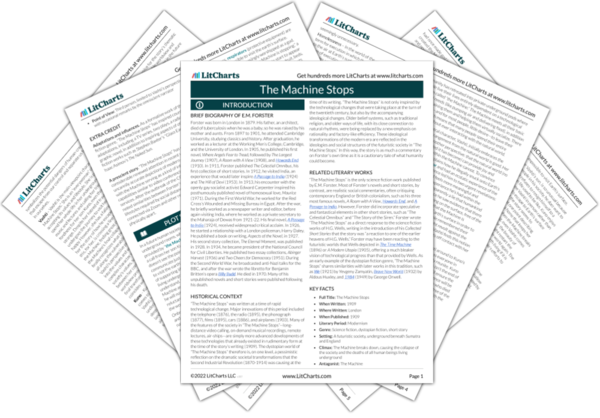Vashti, like Kuno, loves humanity and holds out hope that even if they must die, some essential part of humanity might survive. In saying that he has “seen, spoken to, and loved” people aboveground, Kuno may be referring to communing with the voices of the dead that he heard as he approached the surface. Or it could be that in the years following his initial escape to the surface, he made other journeys and spent time among the Homeless. Although the Homeless people’s ability to survive above the surface is never explained, one possibility is that Earth’s surface is actually still capable of supporting human life, but that the physiology of those who live underground has altered so much that they are no longer adapted to it. Vashti’s worry that someone might simply start the Machine again after this disaster shows her transformation: she now rejects the Machine and embraces Kuno’s alternate vision of humanity reclaiming the world from technology.


